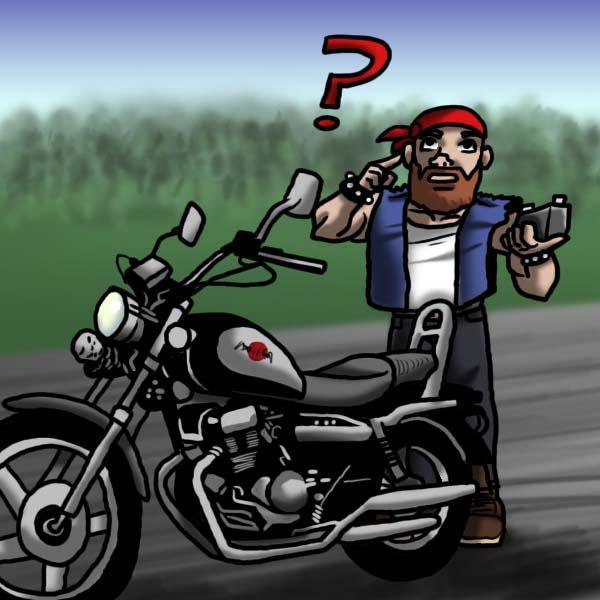Gel Motorcycle Batteries: Everything You Need to Know
There is much debate regarding which is the best type of battery for your motorcycle, ATV or UTV (Side by Side). And with that debate comes some good- and some bad- information. Before we start, let's look at the basics:
What is a Gel battery?

A Gel battery is a lead-based battery, where the acid is in a Gel (silicate) format instead of a liquid. This is different from an AGM, where the acid is in liquid form; but gets fully absorbed into a fiberglass medium sandwiched between the lead plates.
A Gel battery differs from a wet-cell (also known as a flooded) battery, where the acid is full of a liquid electrolyte. But that’s simply the science behind the design. What does this actually mean to you, and how does it affect your motorcycle?
When it comes to the term “Gel Battery,” people tend to confuse that terminology with AGM. It can be emphatically stated that most of the time, consumers think “Gel” when referring to “Sealed-AGM.” There is a performance difference, but what is important here is how does a Gel battery stack up against the other Motorcycle battery types? Let’s address that by answering a few questions:
- Can you use a Gel battery on a motorcycle?
- What are the disadvantages of Gel batteries for motorcycle starting?
- Can you charge a gel battery with an alternator?
- Why do Gel batteries fail?
- But what are the advantages of a Gel battery for motorcycle use?
- OK, but Gel vs. AGM vs. Lithium for Motorcycle starting: Which is best?
Can you use a Gel battery on a motorcycle?

Yes, you can. But should you? Most motorcycle charging systems are optimized for AGM or lithium (we’ll return to this later). There were even a few years when BMW specified a Gel Battery for their motorcycles, but they have since returned to AGM for its ease of use. All other motorcycle manufacturers currently use AGM or Lithium.
What are the disadvantages of Gel batteries for motorcycle starting?
While Gel has its advantages, it has a few drawbacks. Size for size, they store a bit less power than an AGM, are a bit more finicky to charge, and generally are priced a bit higher than other lead-acid-based batteries.
Based on market studies, AGM batteries surpass 99% of sales in the battle of AGM vs. Gel. They have become the dominant lead-based battery technology for motorcycle and ATV starting applications, both aftermarket, and OEM.
Can you charge a gel battery with an alternator?
We mentioned that Gel could be finicky to charge, so you might wonder if it is OK to charge a Gel motorcycle battery using your stock charging system. Yes, so long as the alternator or stator does not exceed 14.4 volts.
As mentioned, most charging systems are set to correctly charge AGM and lithium, which can be a higher voltage than most Gel battery manufacturers suggest. When charged above the suggested volt range, a Gel will boil, and Gel batteries are not as tolerant to boiling as a comparable AGM. Also, keep in mind if your charging system will work, you will need a gel motorcycle maintainer for when you are not using the battery.
Boiling and overcharging a Gel battery is generally the answer to the next question.
Why do Gel batteries fail?
See above. No, really. Most Gel batteries fail due to the alternators or stator’s charging voltage being too high. If you boil Gel, the bubbles get trapped against the lead plates, causing a void where the process of making and storing charge no longer happens. While there are multiple ways to kill a battery, this is a leading cause of premature failure in Gel type batteries.
But what are the advantages of a Gel battery for motorcycle use?
As a technology, Gel batteries can be cycled a bit deeper than a Flooded or AGM battery, and even if the battery gets damaged, it should never leak. And leaking acid on a finished surface will leave signs of damage.
While the deep discharge and paint job protections are nice, this is not the primary function of a motorcycle starting battery. As far as how long does a Gel motorcycle battery last? You could expect the lifespan to be on par with other lead battery types somewhere in the 3-5 year timeframe.
OK, but Gel vs. AGM vs. Lithium for Motorcycle starting: Which is best?

Which is best between those three technologies depends on your expectations. There are applications where we might recommend any one of them. AGM and lithium motorcycle batteries have mostly supplanted Gel motorcycle batteries. Still, if you have a situation where you are placing an abnormally long, heavy load on the battery, a Gel might be preferred.
This would not be the norm for most, but for an ATV with a snowplow or winch, you might consider using a Gel. However, we’d normally still recommend AGM in the most extreme environments due to its charge characteristics, cold weather performance, capacity, and price point.
Whereas, if you need a lightweight, extremely powerful starting battery, the clear choice is Lithium, also known as LiFePo4.
Now that you have a quick rundown on using a Gel motorcycle battery in your ATV, side-by-side, or motorcycle, you can make a more informed decision on your next motorcycle battery purchase. If you have any other questions, we’d be happy to help you finalize your decision.
• Rated article 5 • October 22, 2024 at 4:16 am
• October 22, 2024 at 7:16 am
• Rated article 5 • July 21, 2024 at 1:21 am
• September 27, 2024 at 1:17 pm
• Rated article 5 • April 2, 2024 at 7:06 am
• April 3, 2024 at 10:05 am


